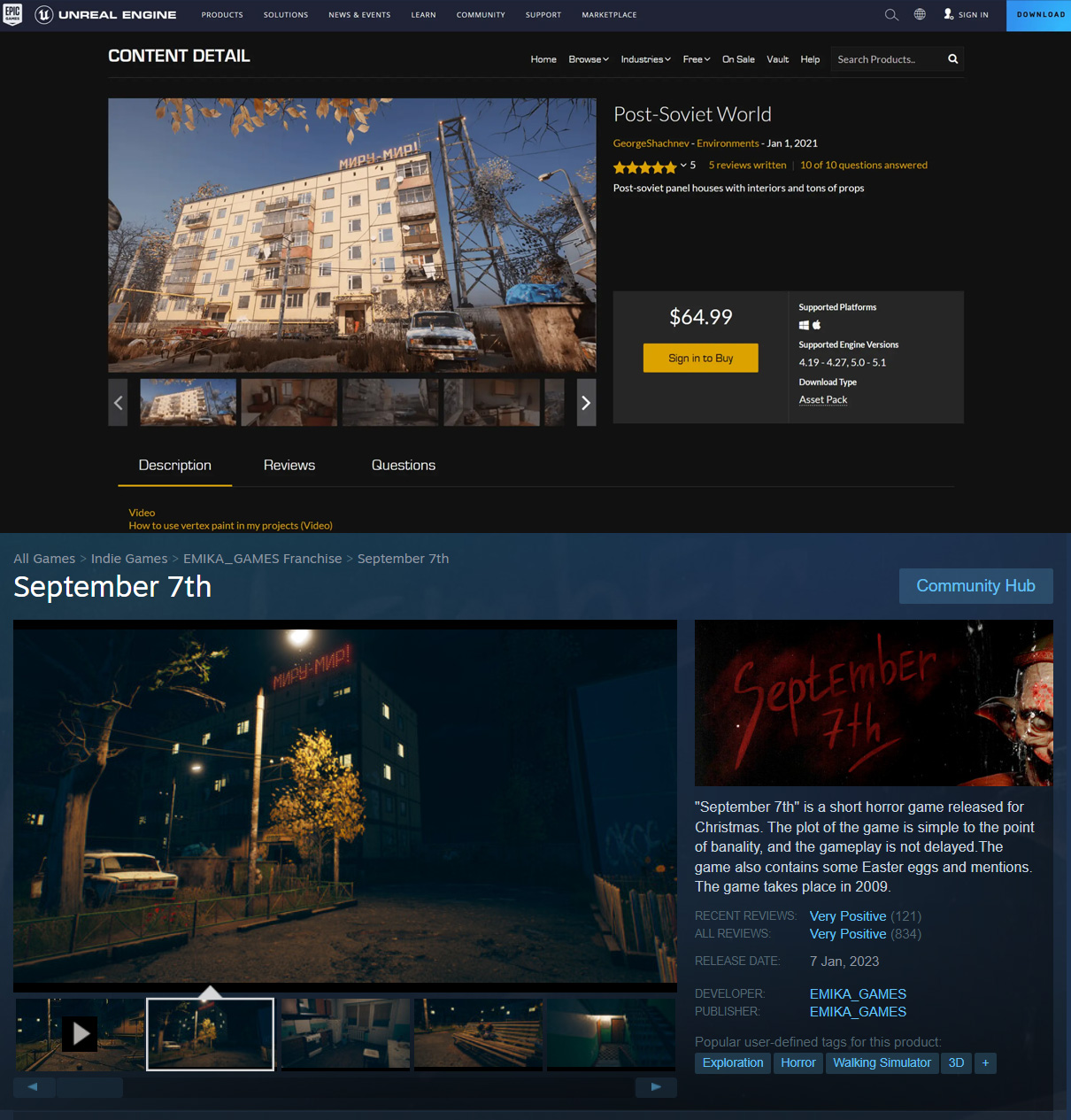How profitable is the business of launching "trash" games on Steam?
A developer under the pseudonym Creator has released a detailed post on DTF about how much money they were able to earn on Steam by releasing “trash” games. Here are the main points from the article.

What is a “trash” game?
A bad or unsuccessful project does not necessarily qualify as a “trash” game. The latter are characterized by being deliberately designed poorly. Their goal is not to entertain the player, but to make money off them by misleading them.
Creator identifies three characteristics that are usually present in such projects.
Firstly, their authors usually resort to “asset flipping”. This practice involves using purchased assets without any modifications. For example, a ready-made environment is taken and inserted into the project as is.

Secondly, authors of “trash” games use ready-made gameplay templates that can also be found in asset stores. No changes are made to the game mechanics.

Thirdly, developers of “trash” games often resort to unethical promotion methods: they add all genres to the project description, buy reviews, and stylize thumbnails that are displayed in the search bar under popular franchises.
Is it possible to make money by releasing such games?
Creator had to get into this business himself to find out the answer to this question.
Over the course of a year, the developer created 8 “trash” games, spending a total of $5000 on their development and placement on Steam (which is paid, with the placement of one game in the store costing $100).
The developer did not spend any money on marketing, but did promote the games. They note that they “performed the recommended minimum actions”:
- made several posts about each game on Reddit pages (which could increase the daily growth of wishlists from 10 to 15-20 in the short term);
- launched short videos on TikTok and YouTube Shorts (the videos received up to 80,000 views and 100 comments, but did not convert into wishlists or purchases).
- sent keys to influencers on YouTube and Twitch (often the reviews were not from those who received the keys, but from those who found the games themselves, and when lucky, the reviews increased daily purchases from 5 to 10-15).
- formatted the game pages on Steam well (prepared readable thumbnail banners and selected tags that allowed the game to appear on the pages of as many popular titles as possible).
So, can you make money doing this?
As it turned out, yes.
So, as mentioned earlier, $5,000 was spent on developing eight games. The budget varied from game to game. Five projects cost $400 each and the remaining three cost $1,000 each.
They were sold at different prices (some were sold for $0.99, some for $9.99).
Sales of $400 games on Steam (net):
- 1 project – $2,180
- 2 project – $1,223
- 3 project – $590 (the project turned out to be semi-functional, and the fix was made too late)
- 4 project – $835
- 5 project – $9,564
Sales of $1000 games on Steam (net):
- 1 project – $2,350
- 2 project – $3,421
- 3 project – $6,523
In total, $26,686 was earned on Steam alone.
However, that’s not all.
As it is known, Valve gives the developer 5,000 keys for each released game. Third-party platforms are willing to buy them for 2-5% of the retail price. Selling keys allowed Creator to earn about $4,200 more.
After game sales dropped below $100 per month (the minimum payout threshold on Steam), Creator sold all of their projects to indie publishers to be included in their bundles. They were able to earn approximately $12,000 from the sale of the eight projects.
In total, the developer earned $42,886 from the eight “trash” games. As a reminder, they spent $5,000 on their development. Creator’s net profit for a year of work was more than $37,000.